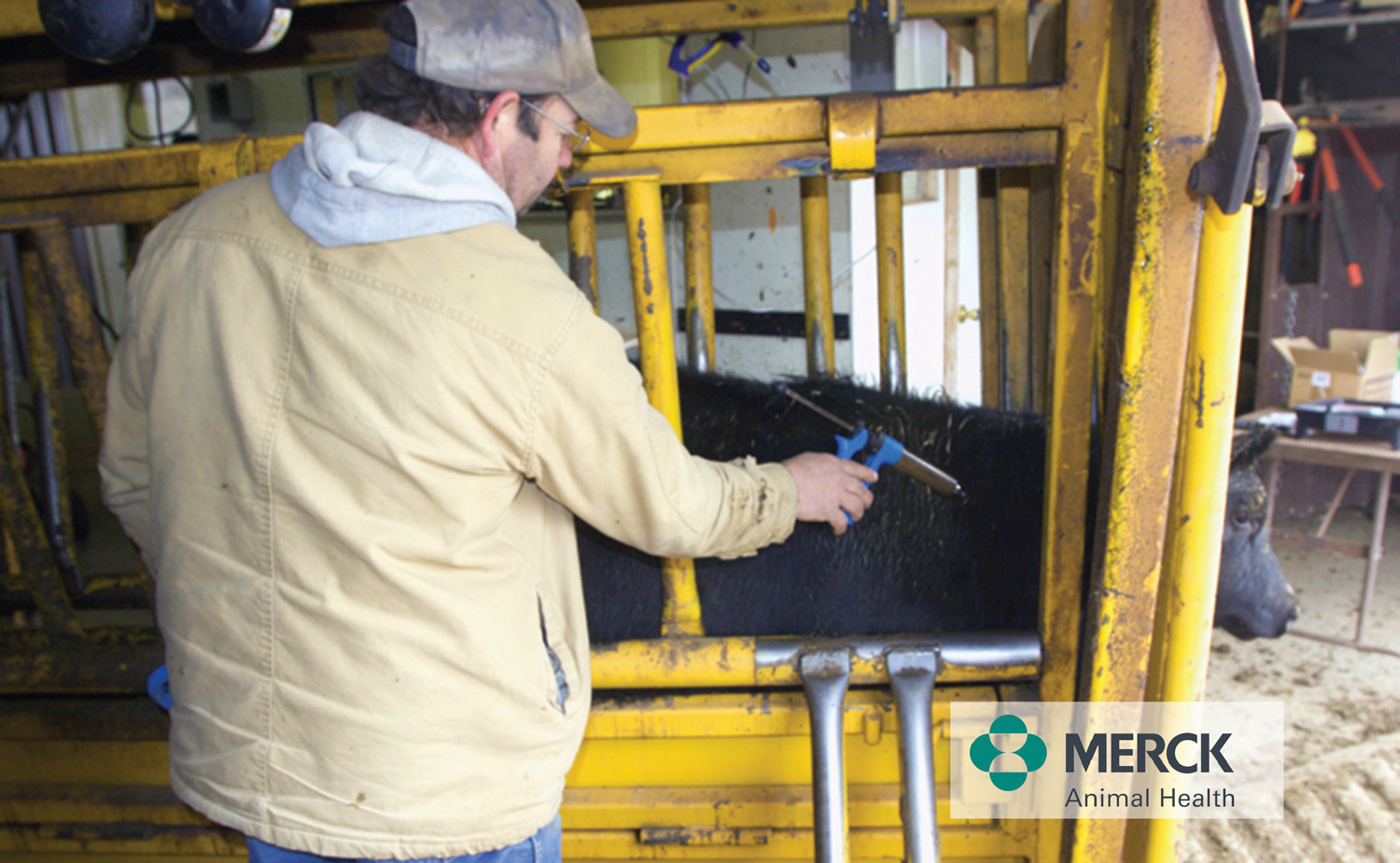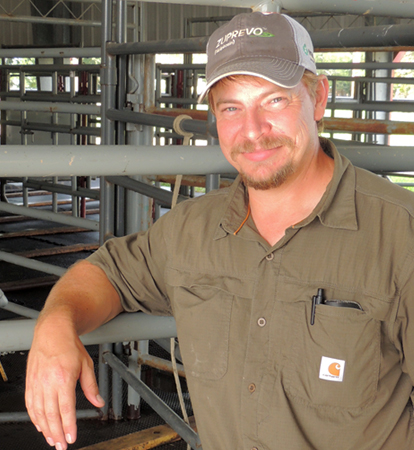Stave off Cattle Bacterial Diseases With Whole-Herd Vaccinations

By Ellen H. Brisendine
Blackleg, red water, pulpy kidney, tetanus — these descriptively named cattle diseases and others are caused by various species of bacteria in the Clostridium genus.
These anaerobic bacteria are a part of the environment and of the normal population of bacteria found in cattle.
When something causes them to flourish they release toxins that damage the calf or mature animal and usually cause the fairly quick death of that animal.
How does the cattle owner fight against regularly occurring bacteria and protect the health of the herd? With a regular vaccination program that includes 7-way, 8-way or 9-way vaccines for all ages of cattle in the herd, says Dr. Jacques Fuselier, Merck Animal Health.
He also recommends the unexpected step of looking at your pastures with performance in mind.
Have you noticed calf death loss is higher in one pasture than the others? Are there some areas on the ranch where the cattle seem to not do as well as the rest of the herd?
Although there are many potential reasons for this, the culprit could be in the Clostridium bacteria in the soil and the seasonal environmental factors that help the bacteria to thrive. Avoiding that pasture at certain times or using it for properly-vaccinated cattle might be a solution, he suggests.
Pattern of prevention
Give your calves, replacement cattle and mature cattle a good start in life, Fuselier says. “The bulls need to be protected so they don’t contract a clostridial disease out in the pasture. Then vaccinate pregnant cows a few months, 2 months is ideal, prior to the start of calving season,” Fuselier says. This increases the cows’ immunity to the clostridials, which goes into the colostrum for her newborn calf.
“Immunity will be passed on to the calf in the first milk,” Fuselier says, “and we reduce her chance for tetanus or any other clostridial infection if there are any calving difficulties.”
Colostrum provides the calf with immunity until it receives its own vaccination and booster. “Calves need multiple rounds of these clostridial vaccines to get high enough levels of protective immunities. Then it should be included in at least an annual vaccination program, for the rest of that animal’s life.”
In some cases, older cattle are left off the list for clostridial vaccinations. Fuselier explains, “The unvaccinated mature herd becomes ‘naïve’ and you end up getting less and less immunity in the herd. This potentially allows more accumulation of these organisms and increases the risk of disease.”
Tough organisms
Clostridium bacteria are tough organisms that have been around for ages. The bacteria can be ingested or be introduced into a wound. “They create lots of problems — everything from gas gangrene-type issues, to tetanus to hemorrhagic gastrointestinal disease to blackleg. And the bad thing about it is they often cause rapid death. Most of the vaccines out there do a good job of creating good immunity against clostridial organisms,so they are worth the investment,” Fuselier says.
Notice if cattle come up sick after being in certain pastures on your ranch. If so, consider that in pasture rotation when you have weaned calves. “If you put freshly-weaned calves in an area that’s known to have the bacteria for blackleg in the soil, then you run a great risk of those calves getting blackleg. It would be safer to use that pasture for well-vaccinated yearlings or 2-year-old heifers. While this group of cattle is still at risk to get clostridial disease, the risk is less than in younger calves. Just understanding where you have these diseases on the ranch helps you coordinate where you will put the animals to minimize the risk of getting disease. It doesn’t change the exposure, but it does change the risk,” he says. Your herd veterinarian can help identify these areas.
7-, 8-, 9-way
The names 7-way, 8-way, or 9-way on a vaccine indicate the number of species you’re protecting against with that vaccine. “The 7-way is the base or the core vaccine,” Fuselier explains. “The 8- and 9-way vaccines have the frills. They offer protection against 7, 8 or 9 of the most prominent species of clostridial bacteria with which animals come into contact.”
Fuselier says each cattle owner should to check with their veterinarian for advice on the right vaccines to use.
“I call it ‘Management in a Bottle,’” he says. “Everybody’s looking for that one magic shot and there’s no such thing. The vaccine is very important, but it is helpful to also be aware of what disease is on the ranch, when certain diseases may occur and to manage the herd’s vaccine program and grazing movement to minimize exposure to the disease risk.”
Meet Jacques Fuselier, DVM
Jacques Fuselier, DVM, manager of cattle technical services for Merck Animal Health, is from Mamou, La. He graduated from Louisiana State University (LSU) with BS in 1998. Following graduation from LSU School of Veterinary Medicine in 2003, he opened a mixed-animal veterinary clinic in southern Louisiana. He left private practice in 2010 to accept a Visiting Clinical Instructor position in the food animal section of the University of Illinois College of Veterinary Medicine.
In 2011, he became board certified with the American Board of Veterinary Practitioners in the Food Animal practice category. He also became board certified with the American College of Theriogenologists in 2013. He has completed the Veterinary Laboratory Diagnosticians Course at the Foreign Animal Disease Diagnostic Laboratory in Plum Island, New York. Fuselier served as an assistant professor in farm animal health management at the LSU School of Veterinary Medicine.
Photo Courtesy of Whittington Vet Clinic

“Whole-Herd Vaccines” is excerpted from the March 2018 issue of The Cattleman magazine.
